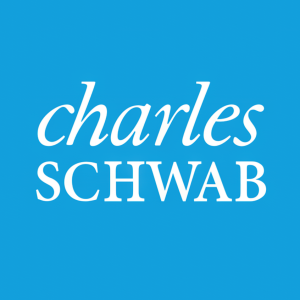Introducing the Schwab Trading Activity Index™
Monthly report, formerly the TD Ameritrade Investor Movement Index®, provides unique insights into retail trading behavior at an unprecedented scale from Schwab's millions of retail investor clients
Following an aggregated and anonymized analysis of Schwab’s millions of client accounts, the STAX determines a score, generally ranging from 35-70, that serves as a proxy to gauge Schwab clients’ exposure to equity markets. Over time, changes in this score month-by-month serve as an indirect measure of sentiment, with a higher score indicating greater market exposure and a correlation to bullishness, and a lower score indicating lower market exposure associated with potential bearishness. For example, if the STAX score rises from 40 to 50 from one month to the next, that would indicate that Schwab’s clients, on a whole, increased their exposure to the equity markets and could mark a rise in bullish sentiment.
“As we near completion in the first half of 2024 of the industry’s largest integration of its kind, Schwab is emerging as an even stronger leader in the retail investing and trading space, serving a wide range of investors including High Net Worth, people seeking wealth management and advice, sophisticated traders, and those just getting started on their investing journey,” said James Kostulias, head of Trading Services at Charles Schwab. “The introduction of STAX is a reflection of Schwab’s leadership position in the industry and our deep understanding of trading behavior and sentiment. Going forward, we view STAX as a unique proxy for what’s happening across an incredibly diverse mix of retail investors and traders on a month-to-month basis, and we expect it to be a useful resource for clients, academics, media, and anyone else seeking to understand and keep a pulse on retail trading behavior.”
December Insights
The STAX score for December 2023 reads 44.56, an increase from the November score of 43.64.
The reading for the five-week period ending December 29, 2023 ranks “moderate low” compared to historic averages.
“The holidays tend to be an optimistic time of year for many, and this year was no exception among Schwab’s clients,” said Joe Mazzola, Director of Trading and Education at Charles Schwab. “We did see net selling on a dollar basis, which was particularly pronounced among the Information Technology, Communication Services and Financials sectors, but from an activity perspective, our clients bought more equities than they sold. It’s possible this is a sign of continued optimism into the new year, with virtually all economic indicators painting a rosier picture than in many recent months.”
During the December STAX period, the S&P 500 (SPX) continued an ascent, rising by
Popular names bought by Schwab clients during the period included:
- Pfizer Inc. (PFE)
- Alibaba Group Holding Ltd. (BABA)
- NVIDIA Corp. (NVDA)
- Microsoft Corp. (MSFT)
- Exxon Mobil Corp. (XOM)
Names net sold by Schwab clients during the period included:
- Apple Inc. (AAPL)
- Meta Platforms Inc. (META)
- Tesla Inc. (TSLA)
- Block Inc. (SQ)
- Home Depot Inc. (HD)
2023 in Review
The STAX ended 2022 at its lowest level since April 2020 but began 2023 with three consecutive months of increasing scores. A resurgent tech trade driven by hype around increased investment into artificial intelligence bolstered sentiment. April saw the first decline in the STAX for 2023 as uncertainty surrounding the health of the banking system dampened sentiment. The STAX bounced back sharply to close out the second quarter, finishing at 46.76 in June, its highest level in over a year. Equities continued to rally throughout much of the summer, and the STAX reached 48.08 in August, its highest level of 2023. Interest rates rose dramatically throughout the fall months, pressuring equities. The STAX posted three straight monthly declines before bouncing back in December to end the year at 44.56 after a dovish pivot from the Federal Reserve sent equites near all-time highs.
About the STAX
The STAX value is calculated based on a complex proprietary formula. Each month, Schwab pulls a sample from its client base of funded accounts, which includes accounts that completed a trade in the past month. The holdings and positions of this statistically significant sample are evaluated to calculate individual scores, and the median of those scores represents the monthly STAX.
For more information on the Schwab Trading Activity Index, please visit www.schwab.com/investment-research/stax. Additionally, Schwab clients can chart the STAX using the symbol $STAX in either the thinkorswim® or thinkorswim Mobile platforms.
Investing involves risk, including loss of principal. Past performance is no guarantee of future results.
Content intended for educational/informational purposes only. Not investment advice, or a recommendation of any security, strategy, or account type.
Historical data should not be used alone when making investment decisions. Please consult other sources of information and consider your individual financial position and goals before making an independent investment decision.
The STAX is not a tradable index. The STAX should not be used as an indicator or predictor of future client trading volume or financial performance for Schwab. STAX data includes that from accounts of TD Ameritrade clients which have not yet transferred to Charles Schwab & Co., Inc., as part of our planned integration.
TD Ameritrade, Inc., member FINRA/SIPC, a subsidiary of The Charles Schwab Corporation. TD Ameritrade is a trademark jointly owned by TD Ameritrade IP Company, Inc. and The Toronto-Dominion Bank.
About Charles Schwab
At Charles Schwab, we believe in the power of investing to help individuals create a better tomorrow. We have a history of challenging the status quo in our industry, innovating in ways that benefit investors and the advisors and employers who serve them, and championing our clients’ goals with passion and integrity.
More information is available at aboutschwab.com. Follow us on X, Facebook, YouTube, and LinkedIn.
0124-4JDV
View source version on businesswire.com: https://www.businesswire.com/news/home/20240111543882/en/
Margaret Farrell
Director, Corporate Communications
(203) 434-2240
margaret.farrell@schwab.com
Source: The Charles Schwab Corporation







